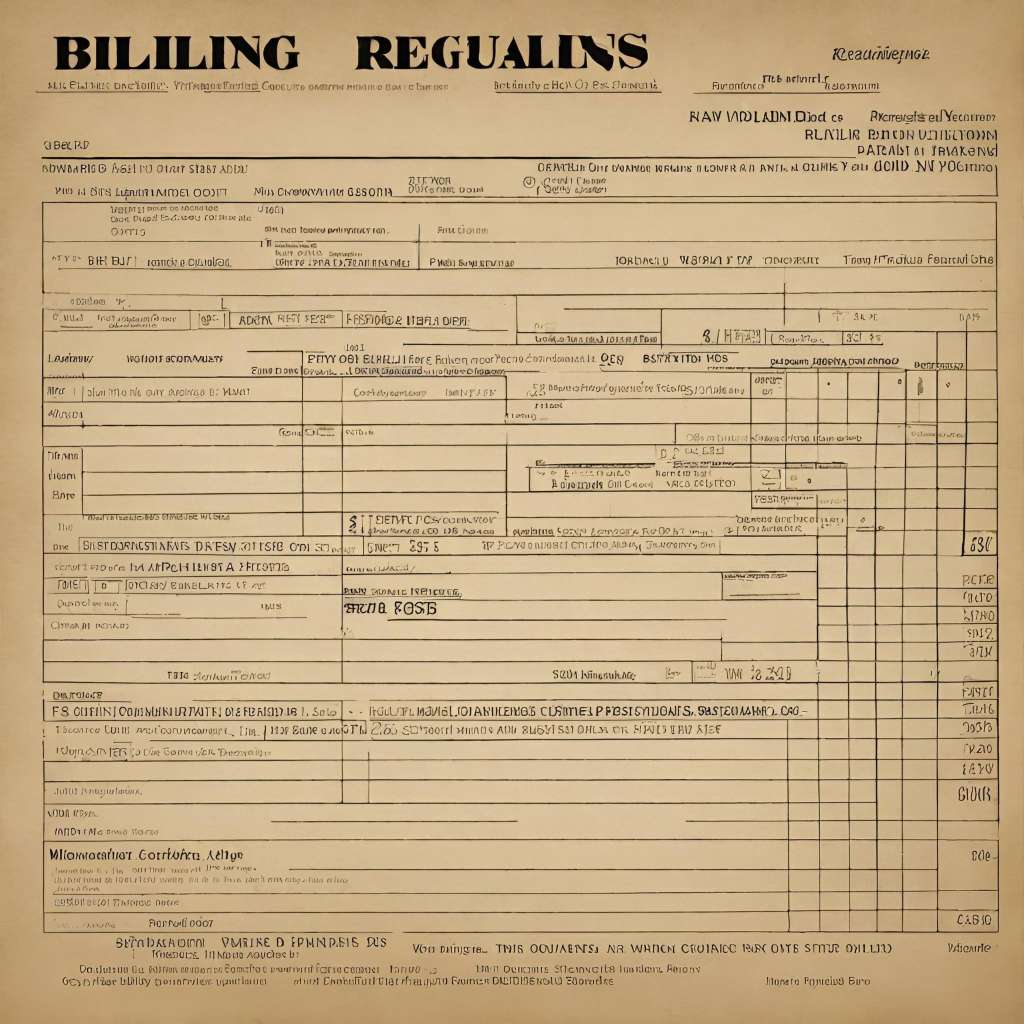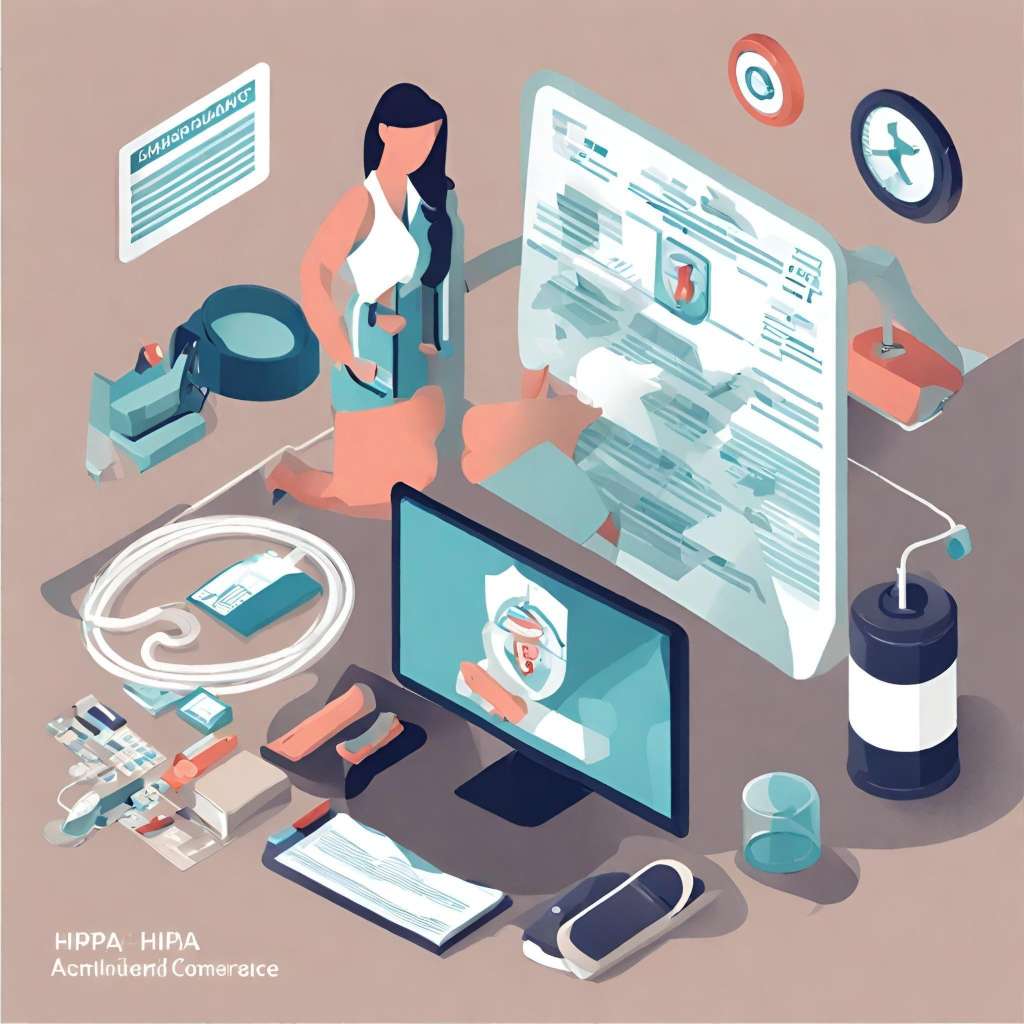Billing and coding regulations both are critical components of the healthcare business, ensuring that transactions are transparent, fair, and compliant with legal standards. Whether you’re a small business owner, a healthcare provider, or a consumer, understanding billing and coding regulations can save you from headaches and financial mishaps. In this article, we’ll break down billing regulations into easily digestible bits and provide you with a straightforward guide to navigating the complex world of billing.

Why Billing Regulations Matter
Billing regulations serve several essential purposes:
Protecting Consumers:
Billing regulations help protect consumers from overcharging, fraud, and unjust practices.
Ensuring Fair Competition:
They level the playing field for businesses by preventing unfair pricing practices.
Complying with the Law:
Businesses must adhere to billing regulations to stay legally compliant and avoid costly penalties.
Common Billing Regulations
Here are some of the most common billing regulations you should be aware of:
Price Transparency:
Businesses are often required to provide transparent pricing information to consumers before purchase, such as itemized bills and estimates.
Fair Billing Practices:
Unfair practices, like hidden fees, double billing, or unauthorized charges, are typically prohibited.
Data Privacy:
In industries like healthcare, stringent regulations protect sensitive patient information during billing processes.
Tax Regulations:
Accurate and timely reporting of taxes and compliance with tax laws are essential.
Electronic Billing:
When it comes to e-commerce, there are regulations governing electronic billing and online transactions, including consumer rights.
Key Considerations for Businesses

If you’re a business owner, consider these key points for staying compliant with billing regulations:
Understand Applicable Laws:
Research and understand the specific billing regulations relevant to your industry, location, and business type.
Train Staff:
Educate your employees on billing regulations, ensuring they’re aware of best practices and compliant behavior.
Maintain Accurate Records:
Keeping thorough and accurate records of all billing transactions can help you in case of audits or disputes.
Periodic Reviews:
Regularly review and update your billing processes to ensure compliance with evolving regulations.
Why Coding Regulations Matter

Regulations for medical coding are crucial for ensuring the accuracy and precision of patient care. They allow healthcare providers to document and convey vital information about a patient’s diagnosis, treatment, and medical history using standardized codes.
By adhering to these regulations, medical practitioners can
- Minimizing claim denials: Accurate coding reduces the risk of insurance claim denials, allowing healthcare facilities to receive timely payments.
- Fair compensation: Proper coding helps healthcare providers receive fair compensation for their services, contributing to financial stability.
- Transparency: Coding regulations promote transparency in billing, which is essential for patient trust and satisfaction.
Common Coding Regulations
- ICD (International Classification of Diseases) Coding:
- ICD is a standardized system for coding diseases, conditions, and diagnoses.
- It is used worldwide for classifying and reporting health conditions.
- The most commonly used version is ICD-10, which has been widely adopted for medical coding.
- CPT (Current Procedural Terminology) Coding:
- CPT codes are used to describe medical procedures and services performed by healthcare providers.
- Developed by the American Medical Association (AMA), CPT is a widely accepted standard for coding medical services in the United States.
- HCPCS (Healthcare Common Procedure Coding System):
- HCPCS codes are used to identify specific items, supplies, and services not covered by CPT codes.
- These codes are often used in conjunction with CPT codes to describe the entirety of services provided.
- HIPAA (Health Insurance Portability and Accountability Act):
- HIPAA includes regulations related to medical coding and billing, with a strong emphasis on patient data privacy and security.
- The HIPAA Privacy Rule and Security Rule have specific requirements for safeguarding electronic health information and patient records.
Comparison of Billing and Coding Regulations

Medical billing and coding are critical aspects of healthcare administration that ensure healthcare providers receive payment for their services, and patients receive accurate bills. Both involve various regulations and guidelines, which can be complex to navigate. we’ll provide a straightforward comparison of billing and coding regulations, highlighting their key differences and similarities.
Medical coders
Medical coders first must interpret the care provided for patients into codes a computer system can understand. There are a few primary types of medical codes, including Current Procedural Terminology (CPT) and International Classification of Diseases, Tenth Revision (ICD-10) codes. Assigning the correct diagnosis and procedure codes requires sound knowledge of medical terminology and adherence to CPT coding guidelines/standards.
Medical billers
Medical billers then use the instructions provided by coders to file insurance claims and post payments to accounts. Claims must have accurate medical information for them to be paid. Billers work with insurance companies to work out denials/rejections, finalize the details, and send out statements.
Nature of Work:
Medical Coding:
Medical coding involves translating the details of a patient’s diagnosis, procedures, and treatment into alphanumeric codes. Healthcare providers use these codes to describe the patient’s condition and the services they provide during the patient’s visit. The primary coding systems in the United States are the ICD (International Classification of Diseases) for diagnoses and CPT (Current Procedural Terminology) for procedures.
Medical Billing:
Medical billing, on the other hand, is the process of creating and submitting claims to insurance companies or government payers for the services rendered by healthcare providers. It involves verifying that the coded information is accurate, preparing bills, and following up on claims to ensure timely payment.
Purpose
Medical Coding:
The main purpose of medical coding is to provide a standardized way to describe a patient’s medical condition and the services provided for accurate record-keeping and billing.
Medical Billing:
Medical billing focuses on generating claims, processing payments, and managing the financial aspect of healthcare services. It aims to receive payment for services rendered.
Skills and Education
Medical Coding:
Medical coders require a good understanding of medical terminology, anatomy, and physiology, as well as knowledge of coding systems (e.g., ICD and CPT). They often complete specialized training or certification programs.
Medical Billing:
Medical billers typically need strong administrative and organizational skills. While formal education and certification can be beneficial, it’s not always a strict requirement. Many medical billers learn on the job.
Workflow:
Medical Coding:
Coding is typically the first step in the revenue cycle. Coders review the patient’s medical records, translate the information into codes, and pass these codes to the billing department.
Medical Billing:
Billing occurs after coding.
Once billers receive the codes, they create claims, send them to payers, and manage the accounts receivable process.
Financial Aspects:
Medical Coding:
Coders do not typically handle financial transactions or interact directly with insurance companies. Their work primarily influences the accuracy of claims and the amount that they can bill.
Medical Billing:
Billers work directly with insurance companies, patients, and healthcare providers to ensure they process claims and receive payments. They also handle denials, appeals, and patient billing.
Conclusion
Billing and coding regulations are separate but related parts of healthcare administration. Billing concentrates on creating correct invoices for services provided, while coding ensures that medical procedures and diagnoses are accurately translated into universally accepted codes. Both processes have common features like complying with HIPAA, requiring precision, and a dedication to maintaining precise patient records. Recognizing the distinctions and connections between these two functions is vital for the smooth operation of healthcare facilities and for delivering top-quality patient care.
Recent Comments